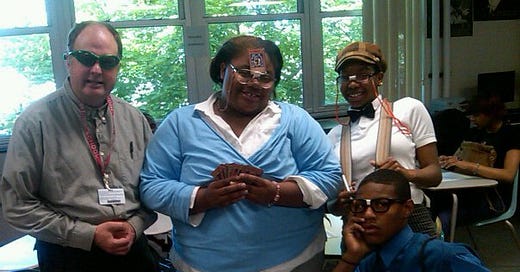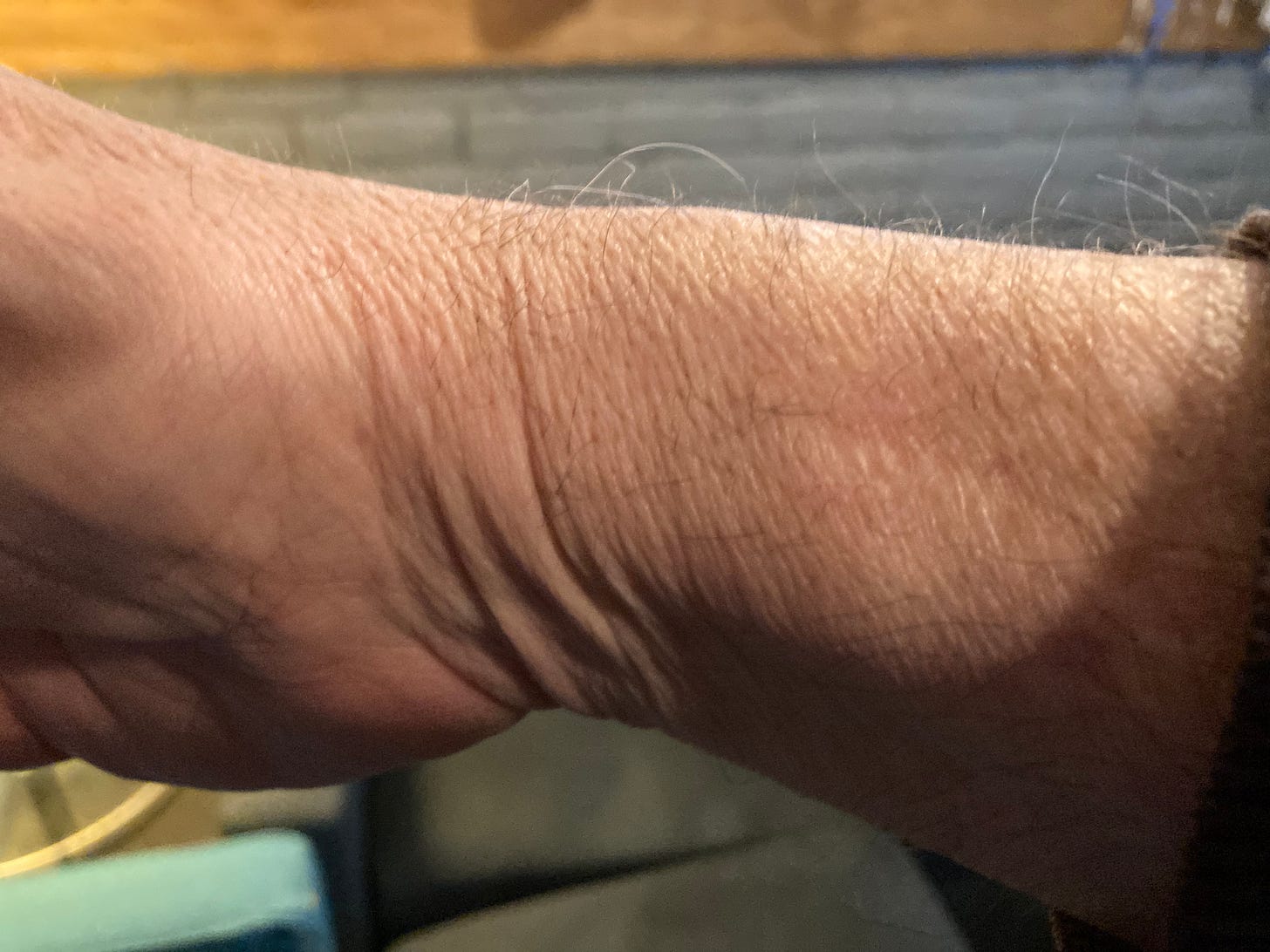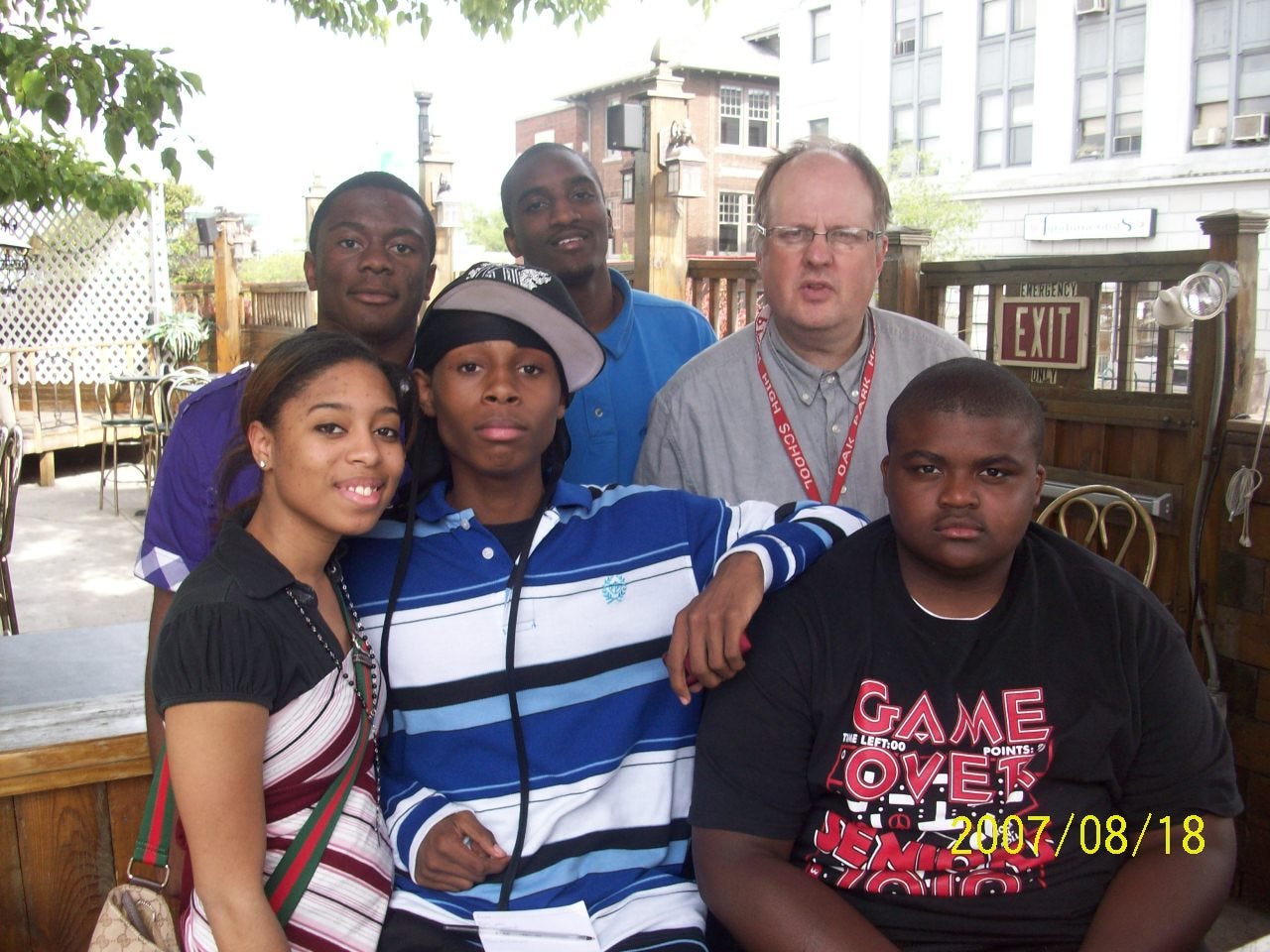“For me, I am driven by two main philosophies; know more today about the world than I knew yesterday. And along the way, lessen the suffering of others. You'd be surprised how far that gets you.”—Neil deGrasse Tyson
Two or three local bullies called him “Spot.” More as a joke than any fight instigation. At least, most of the time.
One harasser did tag him as “Little Nig.”
To avoid further attention, Spot paradoxically wore long sleeves, even on warmer spring and fall days.
His four-sport obsessions, football, basketball, baseball and hockey (in that order), provided some added armor over his skinny slouch. Wearing a helmet and pads, he could savor the romantic role of scrappy team spark-plug, as long as larger beasts limited their violence to the field of play.
As long as no one noticed his little oddity.
The irregular teen gangs also tried picking on Spot’s longtime neighborhood friend — and sometime bodyguard — Dave, “Smush It” and “Smash Nose,” for his cleft lip and palate. Yet unlike Spot, Dave only heard such derogatory shouts far away, down the crowded hall, out-of-sight.
Dave’s adversaries would not taunt him to his face. Stronger and a better fighter, Dave would likely have fought back.
He might have given them a bloody, more deformed nose.
Unexpectedly, by the ninth grade, Dave would simply disappear sometime after Christmas break, disillusioned and tired of not fitting in. Affordable, more effective reconstructive surgery just wasn’t a realistic option back then.
Nor were many caring authorities.
“The pecking order of bullying cascaded down an unsteady ladder of targets.”
In separate narratives, Lucy A and Tom B1 also vanished around that period, victims of prolonged harassment for their early signs of unacceptable sexuality, i. e. they appeared unquestionably “gay,” a near universal condemnation for any kid — or adult — acting a bit “different.”
Spot’s first exposure to classmates dropping out of school.
Adolescent aggression, long before the onsluaght of ongoing digital triggers, seemed more primative back then, including within the most priviledged suburbs.
Such abuse presented a distant 2,000-year echo of the young Roman Emperor Commodus, documented as taking repeated delight in torturing friends and executing slaves who upstaged or slighted his teenage royalty.2
The pecking order of bullying cascaded down an unsteady ladder of targets, where those untouched on the lower rungs of torment would still feel forced to sit in silence as the (mainly verbal) predators had their way, with the occasional shove or hard slap for emphasis.
Late in elementary school, Spot had temporarily aligned himself with the bully gangs dumping Lucy A’s books or chasing Tom B off the playground, under a loud chorus of cruel ridicule, as if such a transfer of mockery could offer a guilt-free perpetrator escape.
“Isn’t this fun, Spot? You’re not as homo as them.”
We were still two decades removed from schools attempting to implement anti-bullying programs, Social Emotional Learning, Restorative Justice or at least perfunctory gestures at improved student safety.
Missing, too, in this White Topia, the belated arrival of any African American students, particularly with the 800+ enrolled at Derby Junior High, seven miles north of 8 Mile Rd. Detroit, in Birmingham, Michigan.
The 1974 5-4 Supreme Court Milliken v Bradley decision outlawed busing as a desegregation tool. With no real Integration Plan B (to this day), white suburbanites found added self-righteous ammunition in justyifying their continued buffer-zone comfort.
A miniscule late 1970s demographic change would emerge in Spot’s high school, Birmingham Seaholm, where an African American brother and sister would quietly assimilate among some 2,000 caucasian students and yes, staff.
Mandated anti-bullying programs did not surface until after the April 1999 Columbine High School massacre. Interestingly, that year Georgia adopted the first state-wide law attempting to reduce such misbehaviors, with the last being Montana in 2015 (home of the widely publicized torture-murder of gay college student Matthew Wayne Shepard six months prior to Columbine).3
The teacher cheerfully finding affinity with so-called nerds.
So, after some repeated retreats under verbal fire, something had to change. Spot’s well meaning parents consulted a highly successful Birmingham dermatologist, Dr. Poole. The doc could liberate Spot from his large mole — and token representation of being facsimile Black — while perhaps slightly reducing the possibility of melanomia in adulthood.
Spot could choose general anesthesia or local, since his oval Great Brown Spot, about the size of a kiwifruit slice, could be easily sliced off from his forearm.
“For no extra charge, we could also snip the smaller one from under your left eye,” he noted.
“No, that’s ok. Just the big one will be fine.”
And a month later, during spring break, Spot slowly rolled over to see Dr. Poole plopping this bloody mini man-o-war into a jar of formaldehyde. Spot instantly discovered how interior tissue under seven layers of skin did not reveal any ethnic coloring, just crimson flesh.
A week later, the bullies noticed.
One sneered, “Hey, guys, look, they cut the Negro out of Spot!”
To Spot’s slight surprise, they soon wandered off in search of new prey for derision. The adolescent rednecks seemed resigned to lose the one symbolic Black boy they could target.
Spot’s friends were both puzzled and accepting, including his curious African American Sunday School classmates. Spot would learn his parents were about to switch Presbyterian churches, their last investment in Detroit, to a congregation much whiter and closer to home.
He never explained the why in his foray into plastic surgery, other than his parents feared imminent skin cancer. Besides, he seemed busier than ever trying to make the varsity basketball and football teams.
Incidentally, the newly popular 2% milk also would not enter public school lunches until 1979, a few years after Spot shed a demeaning nickname — and his 2% representation of something vaguely different.
In June 1979, he walked across the gymnasium stage and into an adventurous life, one which eventually led to a secondary teaching career, where 20 years later he would complete both his student teaching and earn his first assignment — at the same high school he graduated (with the “progress” of about a dozen African American students).
Of course, he would then end up as an urban educator, living not far from his old Detroit sanctuary, embarking on a new school journey, with a playfully strange aside about being 2% Black, feeling glee not guilt, despite a faint scar still visible, just below his writing hand.
Our pioneering Debate Club, over a decade before such enjoyable after-school academics would sadly disappear in-person, for at least a couple of Covid years. Someone needed to buy some more clothes for the teacher. . . .
Tom would tragically take his own life many years later. It would not be the only such distressed exit from our graduating Class of 1979. I do intend to revisit this much darker extension of bullying harms in a future Substack.






